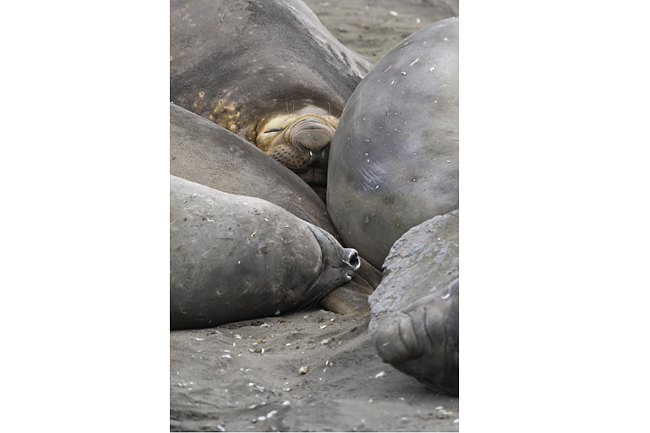THE WASHINGTON POST – On land, northern elephant seals laze around, sleeping up to 14 hours a day. But when the seals take off on seven-month foraging trips in the ocean, their sleep habits take an extreme turn.
Scientists fastened neoprene caps wired with sensors to the giant marine mammals’ heads during foraging in the open sea, and they discovered the seals take brief nap-dives deep underwater, cumulatively getting only about two hours of sleep a day.
The study, published in the journal Science, reveals the precise choreography of their bizarre soporific routine. To avoid predators, the seals dive down deep until they start to nod off and glide. As sleep takes over, they flip belly up, twirling downward before waking up to swim to the surface and catch a breath. Sometimes, they snooze on the ocean floor. The whole cycle takes less than half an hour.
Unlike humans, who would get drowsy and cognitively impaired if they switched to such a radically different sleep schedule, the foraging seals seem to get just enough rest to function with bouts of repeated sleep dives.
The new study shows how evolutionary adaptable – and weird – sleep in the animal kingdom can be. It also underscores a paradox: Sleep is necessary, but it can be truncated drastically across species.

“The basic misunderstanding is more sleep means more intelligence, or a better working brain, and that’s just not true,” said a sleep researcher at UCLA Jerome Siegel who was not involved in the research. Siegel, for example, worked with colleagues to reveal that long-lived, intelligent African elephants also average about two hours a day, vying with elephant seals for the most sleepless mammal.
Jessica M. Kendall-Bar, now a postdoctoral fellow at Scripps Institution of Oceanography, spent hours as a graduate student at the University of California at Santa Cruz observing elephant seals sleeping on the beach at Año Nuevo State Park, south of San Francisco, as part of the study.
She and collaborators collected experimental data on 13 seals wearing sleep caps and combined that with a larger database tracking the movement of 334 free-ranging seals. The work reveals that elephant seals appear to be able to switch between two totally different ways of sleeping without suffering ill effects.
There’s some level of sleep rebound that occurs when the seals return to land, but their short naps in the ocean don’t appear to be causing sleep deprivation.
“It seems like they have two modes of living,” Kendall-Bar said.
The research team found that when seals entered REM sleep, the mode that is associated with dreaming in humans, they lost “postural control” – in other words, their muscles became paralysed and they flipped belly up, drifting downward in a spiraling corkscrew.
Kendall-Bar noted that elephant seals often grouped their naps together, taking successive dives at dawn after a night of foraging. The time the seals spend in REM sleep increases with each back-to-back dive – sort of analogous to how humans increase the amount of time they spend in REM sleep closer to the morning.
How animals sleep is a question that yields a seemingly endless number of curious answers. Duck-billed platypuses spend up to eight hours in REM sleep, more than any other animal. Dolphins and some other marine mammals sleep with only half their brain at a time – something called “unihemispheric” sleep. And great frigatebirds sleep on the wing for less than an hour per day during six-day foraging flights.






